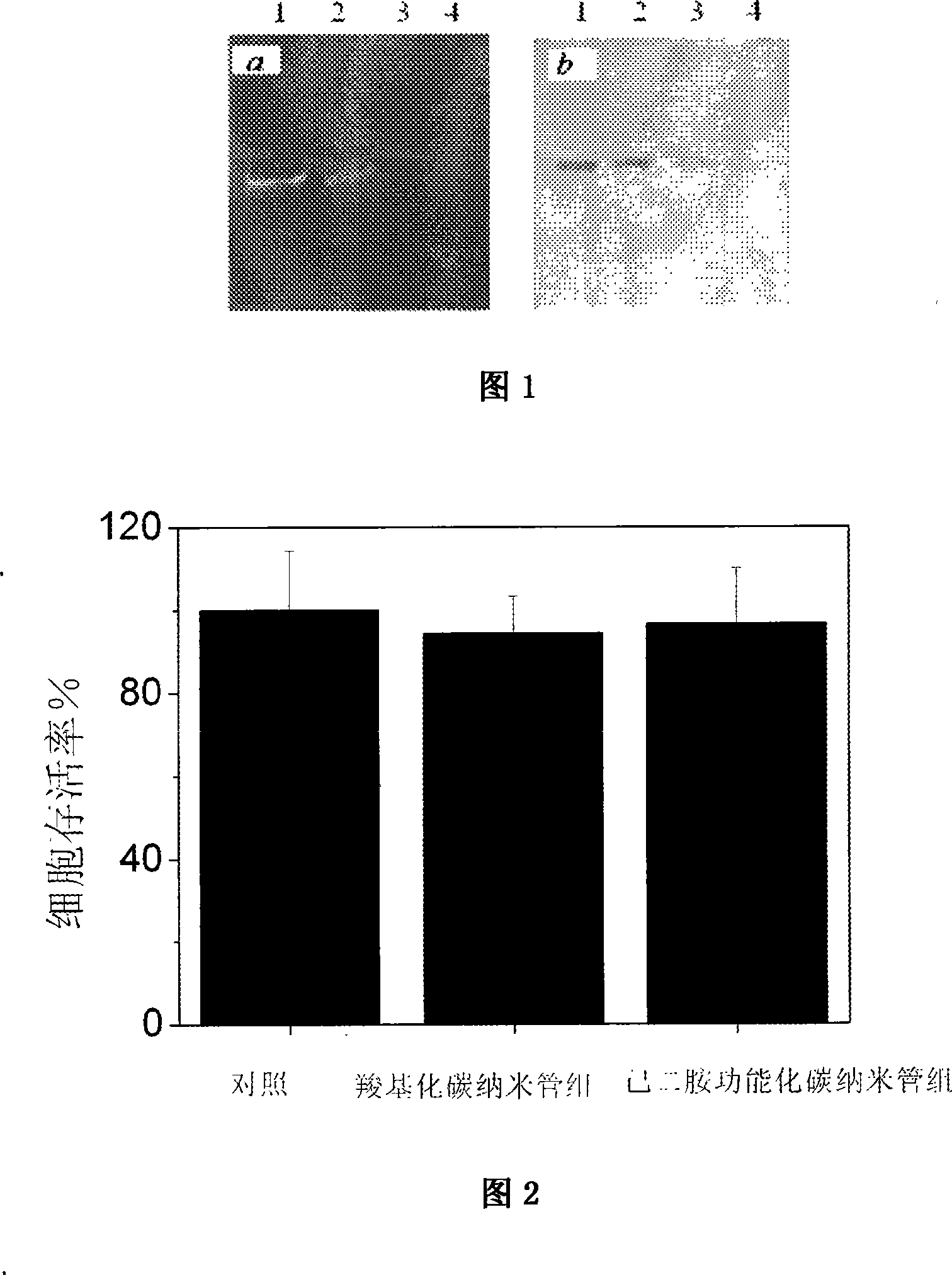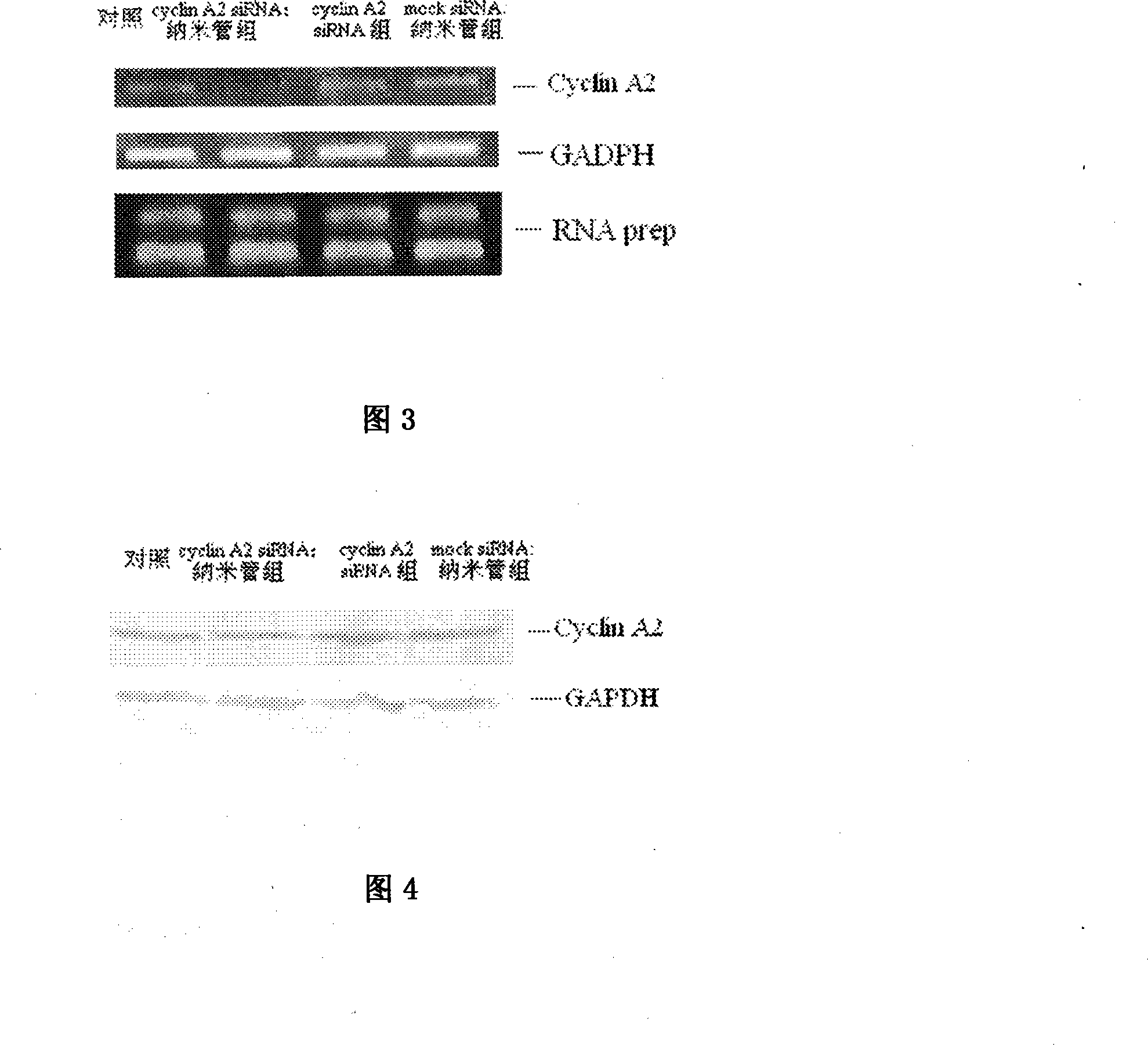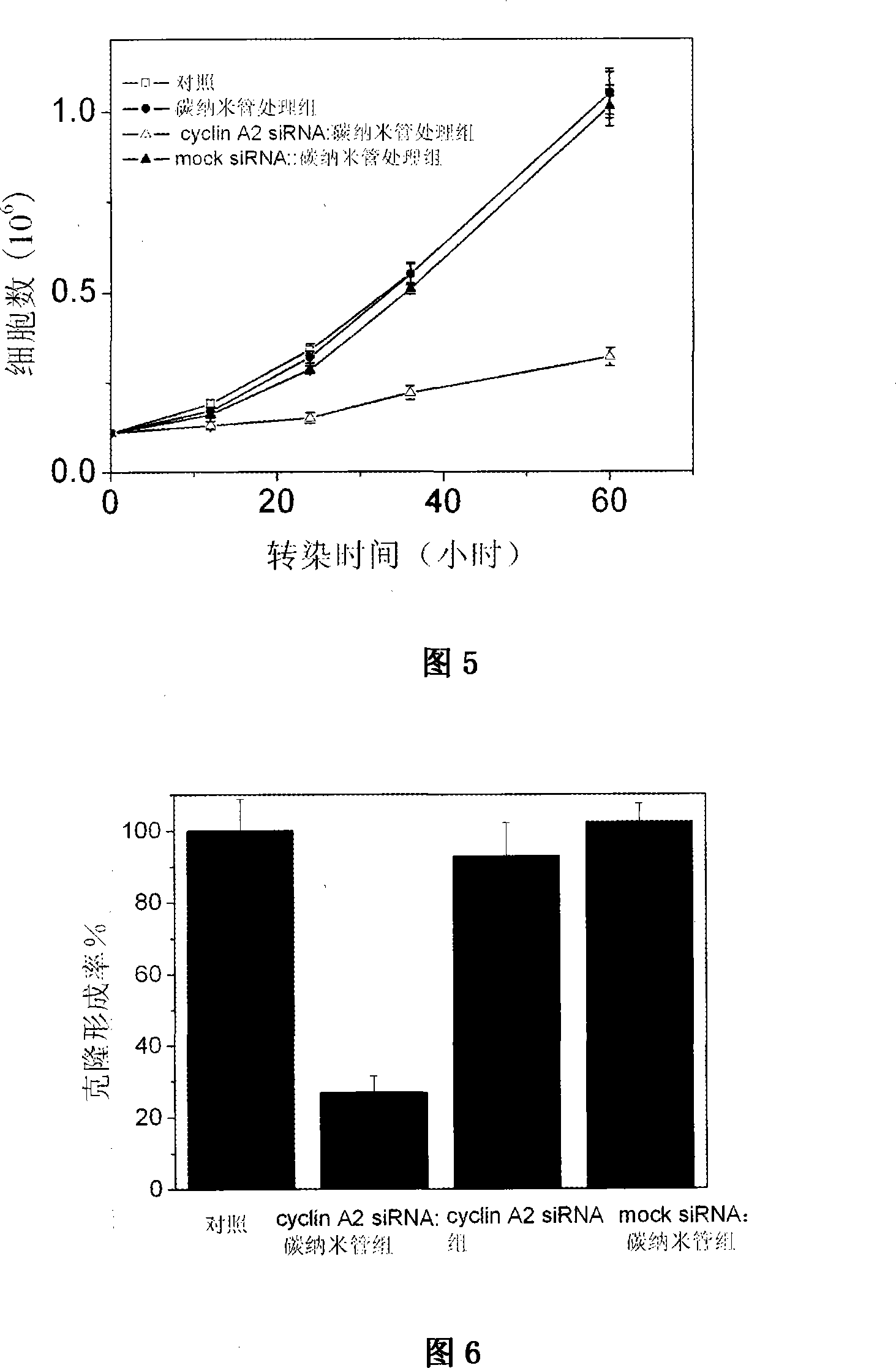Carbon nano-tube as siRNA carrier and transfection method thereof
A carbon nanotube, single-walled carbon nanotube technology, applied in the biological field
- Summary
- Abstract
- Description
- Claims
- Application Information
AI Technical Summary
Problems solved by technology
Method used
Image
Examples
Embodiment 1
[0023] Embodiment 1: carbon nanotube
[0024] The single-walled carbon nanotubes of the present invention are purchased from Adrich (St. Louis, MO, USA), with a diameter of 1.1 nm.
[0025] Carboxylated carbon nanotubes were prepared as follows: the single-walled carbon nanotubes were ultrasonically treated in a mixed acid of 3:1 (v / v) concentrated sulfuric acid (98%) and concentrated nitric acid (70%) for 24 hours, and then washed with water to a pH close to neutral.
[0026] The carbon nanotubes functionalized with hexamethylenediamine are prepared according to related patented technology (reference: Chinese patent application number: 200610016734.4).
Embodiment 2
[0027] Example 2: Preparation of siRNA: carbon nanotube complex
[0028] siRNA was prepared by conventional methods. The siRNA described in the embodiments of the present invention specifically inhibits human cyclin A 2 siRNA, the target sequence corresponding to the siRNA is human cyclin A 2 The mRNA of the gene, the siRNA is 16-30bp in length and contains the nucleic acid sequence as follows:
[0029] 5’-CCAUUG GUC CCU CUU GAU UTT-3’
[0030] 5'-AAU CAA GAG GGA CCAAUG GTT-3' (SEQ ID NO: 1)
[0031] Preferably, the 3' end of the siRNA contains an extended structure of 2-4 dT or 2-6 U;
[0032] The negative control siRNA is:
[0033] 5’-UUC UCC GAA CGU GUC ACG UTT-3’
[0034] 5’-ACG UGA CAC GUU CGG AGA ATT-3’
[0035] Mix the siRNA and the carbon nanotubes at a ratio of 1:40-1:200 (w / w), and place them at room temperature (15-30° C.) for 30 minutes to one hour.
[0036] Non-denaturing polyacrylamide gel electrophoresis experiments confirmed that when the ratio of siRNA...
Embodiment 3
[0037] Example 3: Transfection
[0038] Transfection mainly has the following steps:
[0039] (1) Preparation of cells to be transfected: K562 cells were inoculated in IMDM (Iscove's modified Dulbecco's medium) medium containing 10% fetal bovine serum and 2mmol / L glutamine, placed at 37°C, 5%CO 2 In the saturated humidity incubator with (v / v) concentration, no drug was cultivated two weeks before the experiment.
[0040] (2) The siRNA:carbon nanotube complex was prepared by the method in Example 2.
[0041] (3) Transfection: cells were seeded in 6-well or 24-well culture plates at a density of 0.5-1.2×10 5cells / mL, add the siRNA:carbon nanotube complex into the cells, the final concentration of siRNA is 40nmol / L, and then place it at 37℃, 5%CO 2 (v / v) concentration in a saturated humidity incubator.
PUM
| Property | Measurement | Unit |
|---|---|---|
| diameter | aaaaa | aaaaa |
Abstract
Description
Claims
Application Information
 Login to View More
Login to View More - R&D
- Intellectual Property
- Life Sciences
- Materials
- Tech Scout
- Unparalleled Data Quality
- Higher Quality Content
- 60% Fewer Hallucinations
Browse by: Latest US Patents, China's latest patents, Technical Efficacy Thesaurus, Application Domain, Technology Topic, Popular Technical Reports.
© 2025 PatSnap. All rights reserved.Legal|Privacy policy|Modern Slavery Act Transparency Statement|Sitemap|About US| Contact US: help@patsnap.com



